When it comes to gardening, there are just a handful of ingredients that are needed (of course, there are several tips and tricks that can help to enhance those ingredients to improve your success, including a green thumb).
Everyone – from avid gardeners with years of experience to individuals who have never planted a seed or bulb before – knows that soil is one of the key ingredients; however, soil often doesn’t receive the attention it deserves.
Why Soil Type is Important
Soil is important for a number of reasons. Not only does soil anchor and stabilize plants, but it also provides them with the nutrients that they need to survive and thrive; furthermore, soil supplies air for gaseous exchanges between plants root systems and the atmosphere, and protects them from erosion and other types of biological, physical, and chemical activity that could prove to be destructive to plants. Of course, soil also delivers moisture and maintains proper aeration that plants require.
Needless to say, soil is vital for plants, and if you’re planning a garden, the type of soil you’ll be planting in will have a direct impact on its outcome; therefore, familiarizing yourself with the earth in the area that you intend on planting in is essential. There are four main types of soil, including sandy silt, clay, and loamy.
Of all these four types, clay is one of the most challenging. It’s wet, dense, and the sun and heat can bake it so much so that its consistency and texture becomes brick-like. Not only is it difficult to work with clay soil (trying to dig into baked clay soil is virtually impossible), but the consistency of clay soil leaves very little room for the water movement and aeration that plants need to survive.
Whether you’re overhauling an existing garden that didn’t take or you’re going to be creating a new flower bed, it goes without saying that you want your efforts to be as successful as possible.
If you’re planting in clay soil, knowing what types of plants will thrive in this type of earth is certainly helpful.
To help you on your quest for creating a beautiful garden, we’ve assembled this guide, which highlights several plants that do very well in clay soil, and offer some handy tips that will further improve your success so that you can really enjoy the fruits of your labor.
An Overview of Clay Soil
As with everything in life, when it comes to gardening, being as knowledgeable as possible is important, as it allows you to understand the challenges you face and how to mitigate those challenges. That said, before we dive in and explore the different types of plants that do well in clay soil, it’s first important to clarify exactly what clay soil is.
What is Clay Soil?
As stated above, there are four main types of soil and all of them are comprised of eroded particles of rocks. Soil type is defined by the difference in size of the rock particles that it contains. Sand is the largest, silt it medium, and clay is made up of the smallest particles of rock.
To further clarify, clay soil contains a high ratio of small, fine particles (about 1/200 mm in diameter) compared to the number of sand or silt particles, and compared to other types of soil, it contains minimal organic matter. When soil is comprised of more than 50 percent clay particles, it is referred to as “heavy clay”. The small size of these particles results in very dense soil. There isn’t much room between the particles, which makes for great water storage; however, it limits water drainage and aeration, and can inhibit a plant’s root development.
What are the benefits of clay soil?
While its description may not paint a positive picture, there are some benefits to clay soil. For example, as mentioned above, due to its density, it retains moisture well. That’s because clay is the smallest particle, and therefore, the pore space in the soil is also small, so water filters through the soil at a very slow rate and has lots of surface area to latch onto.
Furthermore, the soil is comprised of are negatively charged, so they attract and hold positively charged particles, like potassium, calcium, and magnesium, which means that clay soil is very nutrient rich.

What are the disadvantages of clay soil?
As pointed out, clay soil is one of the most challenging soils to work with. While its high water-holding capacity can be beneficial, it’s also a disadvantage, as it makes for poor drainage; as such, plants can be drowned out, and in heavy rains, a clay soil garden can become flooded.
Additionally, because the particles are so fine, clay soil is very compact, and the air-holding capacity is minimal, which can make it challenging for a plant’s roots to grow through and move within the soil. It’s also heavy and can be difficult to dig through, it has a tendency to warm slowly in the spring, and when it dries out, it gets very hard and can crack.
How can I tell if I have clay soil?
So, how can you tell if you have clay soil? Do a soil test and if it’s alkaline, it’s clay; however, you probably don’t need to go to the trouble. Why? Well, because usually, it’s pretty easy to tell, just by looking at and/or working with it. For instance, after it rains or after watering, if instead of soaking into the ground the water puddles up, the soil is probably clay.
Additionally, if it’s heavy, it isn’t easy to separate, or it gets stuck to the bottom of your shoes, it is likely clay. Examine the soil in your garden. If it hasn’t rained or you haven’t watered in a while, try digging a shovel into the ground or grabbing a handful of the soil; if it’s difficult to push through, or if the surface appears cracked, chances are it is clay. If the ground is wet, scoop up a handful of the soil and try working it into a ball; if the soil holds together, then it’s probably clay.

Can you improve clay soil?
While it does take some work, enhancing the structure of clay soil so that it’s easier to work with is possible. The majority of the work can be done all at one time, though you may need to do some annual upkeep to extend your improvement effort.
In order to improve clay soil, you’ll want to add organic matter to your entire garden bed. Any kind of organic matter can be used, such as grass clippings, manure, crumbled or shredded leaves, and compost are all options that will work well. Whichever material you’re using, spread about 6 to 8 inches onto the top of the soil, and then work it into the top 6 inches to 1 foot of the soil. You can do this by simply using a shovel, or if you prefer, you can use a tiller.
After you’ve amended the soil, the bed will be higher than it initially was; however, this isn’t a cause for concern, as the organic matter will breakdown throughout the growing season, and as it does, the bed will return to its original height, while also continuing to improve the soil. You can plant the bed as soon as you’ve finished amending it, and mix in more organic matter at one or two times a year.
What plants grow well in Clay soil?
While it does present challenges, gardening in clay soil can be beneficial; namely, it can provide a very nutrient-rich foundation for a garden. To improve the chances of a successful garden, it’s a good idea to select plants that do well in this particular type of soil. Just like there are certain plants that do well in full-sun or partial shade, and plants that tolerate high quantities of water or are drought-tolerant, some plants do better in clay soil than others; in fact, some varieties of plants prefer clay soil and thrive in it.
Thankfully (and perhaps surprisingly), there’s a long list of plants that do well in clay soil. Here’s a look at several options to consider that will make for a healthy, beautiful clay soil garden.
Aster
These perennial flowers bloom late in the growing season and will keep your garden looking beautiful until the first frost. They come in a variety of colors, including purple, pink, white, red, and even blue, and add a sunshiny, welcoming look to any garden.
Asters do well in clay soil, though they do require sufficient drainage, so if you have heavy clay soil, you might want to consider either double-digging (digging a trench that’s about 2-feet into your garden, filling it with a mix of soil and compost, and then filling the trench with the native soil and mixing everything together) the soil, or planting them in a raised bed.
Asters are hardy in USDA growing zones 3 to 8, and they like full-sun to partial shade.

Black-eyed Susan
Rudbeckia hirta, better known as black-eyed Susan, require minimal maintenance and are super adaptable. They bloom for several months and can survive for years in all types of conditions. The bright yellow color with the dark brown center is unmistakable and just brings a smile to your face.
So long as there’s decent drainage, black eyed Susands do well in a variety of soil types, including clay. Again, since they need drainage, if you’re planning on adding them to your garden, consider a raised bed or double-digging to improve the chances of success.
Black eyes Susans are hardy in USDA growing zones 3 to 7 and like full sunlight.
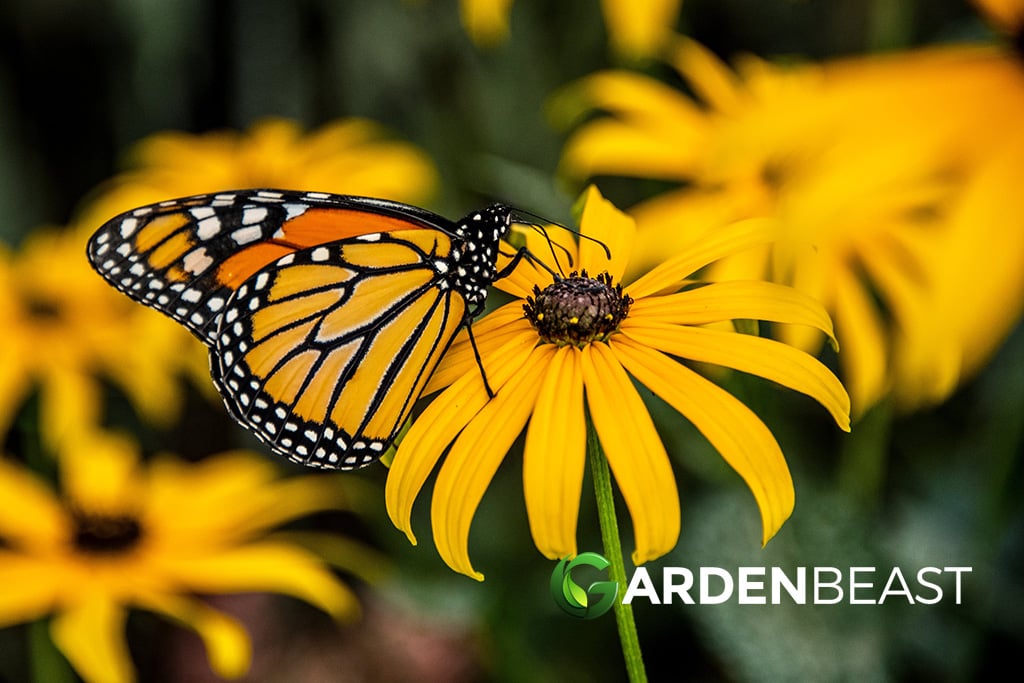
Arkansas blue star
The delicate green leaves and pale blue star-shaped flowers of the Arkansas blue star are a lovely addition to any garden; particularly for borders. These flowers bloom in late spring and once the blooms expire, aesthetically pleasing seed pods appear. They wrap up the growing season with brilliant golden-colored foliage in the fall. Arkansas blue star will grow in most soils, including clay; however, it does not tolerate prolonged periods of drought.
This stunning plant is hardy in USDA growing zones 5 to 8, and it likes full sun to partial shade.
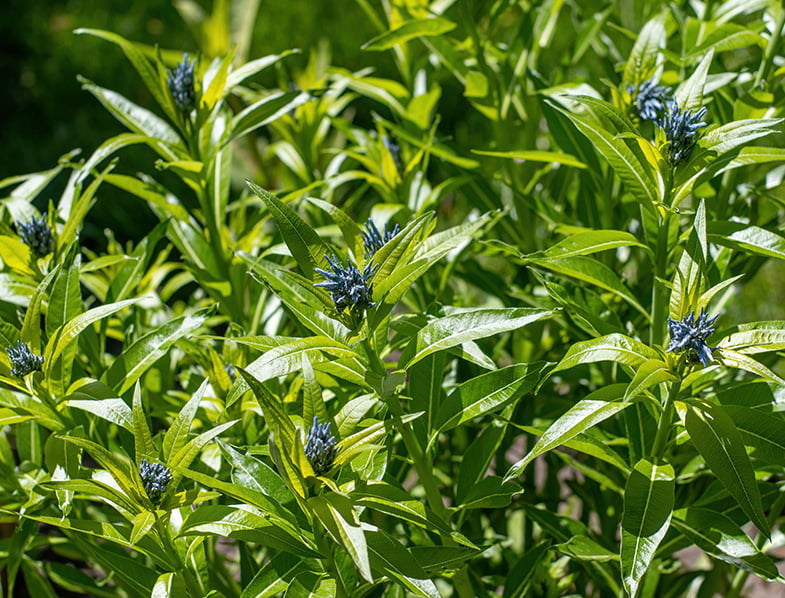
Big Bluestem
Andropogon gerardii, or “big bluestem” is an ornamental grass that thrives in arid conditions. Not only does it add visual appeal to a garden, but it’s also useful for preventing erosion. The blades of big bluestem are a reddish-purple color. It tolerates most soils well, including clay. When the conditions are fertile and moist, the grass grows rapidly and large, and in less fertile, dryer conditions, it grows slower.
This ornamental grass is hardy in USDA growing zones 4 to 9 and it does best in full sun.
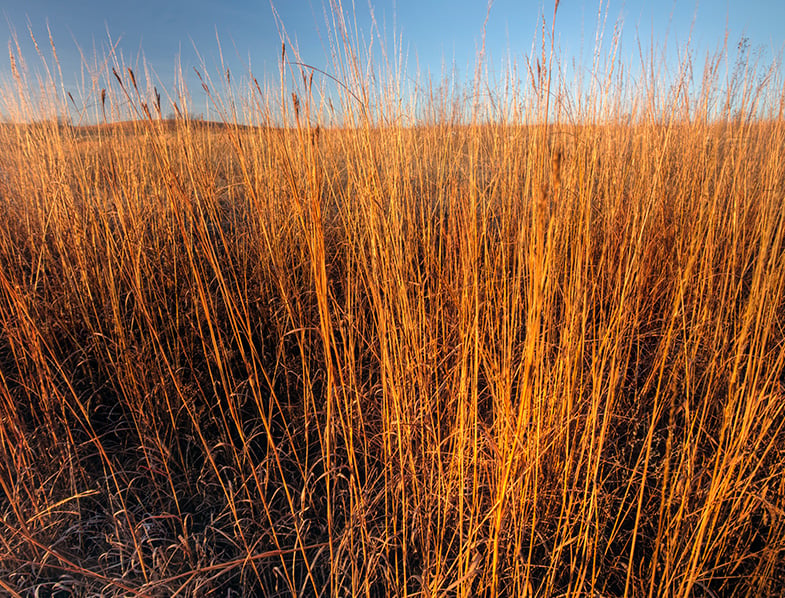
Blazing star
The aptly named blazing star feature spike-like flowers that grow in a bottle brush formation and feature brilliant purple, red, or what star-like blooms that quite literally resemble a blazing star. They have a long bloom time and the flowers, which produce a sweet nectar, attract pollinators; monarch butterflies, in particular, love them. Blazing star plants prefer moist, nutrient-rich soil, which is why they do so well in clay gardens. It should be noted, however, that they don’t do well in wet soil over the winter season.
Blazing star is hardy in USDA zones 3 to 8 and they like direct sunlight.
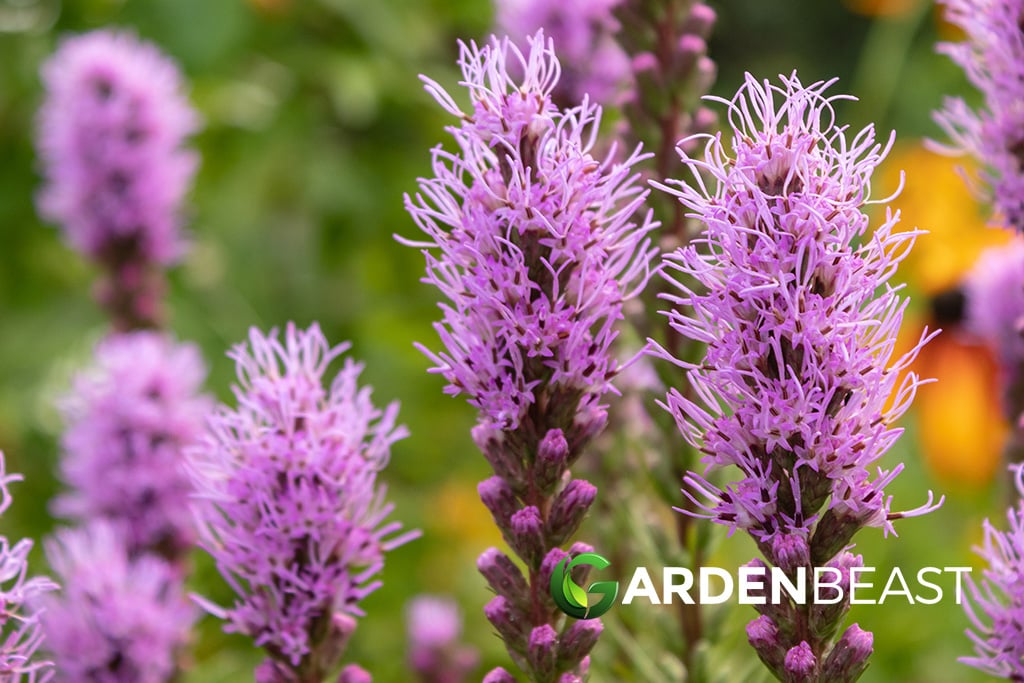
Compass plant
Silphium laciniatum is a quintessential prairie plant; they grow in abundance across the state of Texas, which is famous for its abundant and stunning wildflowers – and where the soil is largely clay. The flowers of this plant are a sunny golden color, and the shape is daisy-like, and creates a show display against their backdrop of brilliant green foliage.
Compass plant is hardy in USDA growing zones 3 to 8 and does best in full sunlight.

Canadian wild rye
This cool-season, clump-forming plant grows in a gentle arch-shape. It’s quite easy to grow from seed and it is very adaptable to all types of soils, including clay, and all types of conditions, including drought. The cool green color of Canadian wild rye will lend a gentle look to your garden and will tie in well with virtually any other plant you can imagine.
This clay soil plant does best in full sunlight and is hardy in USDA growing zones 3 to 8.
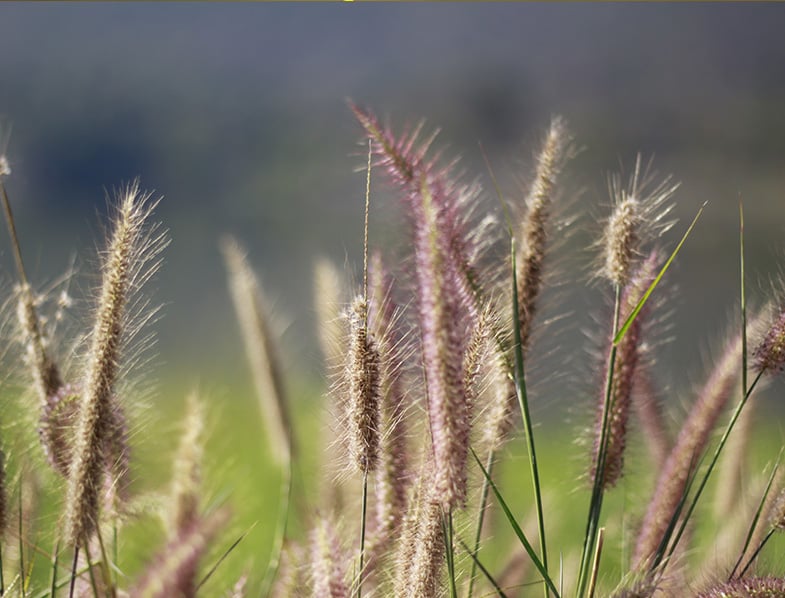
Coneflowers
Tough, rugged, and durable, coneflowers are another distinctive prairie plant that does well in clay soil. It can also tolerate rocky soil, as well as high-heat, severe humidity, and long periods of drought; hence why it’s a prairie plant. Coneflowers scientific name is Echinacea purpurea, while the purple blooms are the best known, there are several other colors available, too, including orange, pink, red, and gold. Regardless of the petal color, all varieties of coneflowers feature a prominent cone-shaped center, which is a defining characteristic that these plants are famous for.
Coneflower can tolerate both direct sun and partial shade, and it is hardy in USDA growing zones 3 to 9.

Daylily
While the blooms last for one day only (hence the name), daylilies produce several blooms, and therefore, they will provide color for your garden for almost a full growing season. Not only do they provide long-lasting color and interest, but daylilies are also one of the most dependable flowers there is, as it grows well in all types of conditions, and it’s virtually maintenance free. While it prefers fertile, loam soil, it does just fine in clay. The blooms grow in a variety of colors, including yellow, orange, red, pink, and purple.
Daylilies do best in full sunlight and they are hardy in USDA growing zones 3 to 9.

Cup plant
Silphium perfoliatum has been dubbed “cup plant” because it water collects in the cups that the plant forms where the leaves join the stems. Of the several varieties of silphium, cup plant is perhaps the most beloved of pollinators, including all types of butterflies and bids. Cup plant is highly tolerant of clay, wet soil, and once it’s established, the plant can do well in drought conditions, too. The sunny yellow, whispy blooms are a welcoming addition to any garden.
Cup plant does best in USDA growing zones and it does best in direct sunlight.

Eulalia grass
Scientifically, Eulalia grass is known as “miscanthus sinensis”, and it’s one of the most popular ornamental grasses. They grow in clumps, and because they are self-seeding, they spread, so if you want to keep them under wraps, you will need to divide them. With that said, however, miscanthus sinesis is very tolerant and dependable, and it does particularly well in heavy clay soil. The foliage of this showy grass is a deep green with hints of copper or silver.
The USDA growing zone for Eulalia grass are 5 to 9, and it thrives in full sunlight to partial shade.

Drooping coneflower
The drooping coneflower resembles the standard coneflower, as it also features a prominent cone-shaped center; however, as the name suggests, the yellow leaves droop, creating a more delicate, almost casual, and sweet appearance. Drooping coneflowers prefer medium moisture soil and decent drainage; however, they can tolerate some degree of drought. They do fantastically well in clay soil.
Drooping coneflowers are hardy in USDA growing zones 3 to 8 and they like full sun conditions.

Fountain grass
Another species of ornamental grass, fluffy, feather-like panicles are fountain grass’ defining characteristic. They grow in a variety of heights, and the green blades of grass are accented by blooms that can appear silverfish or pinkish in color. While they can grow in various climates, they are usually only a perennial in warmer regions, and though fountain grass would rather loamy soil, it can tolerate clay, as well.
Fountain grass does well in both full sun and partial shade, and it is hardy in USDA growing zones 6 to 9.

Creeping phlox
These sun-loving perennials will offer long-lasting color to your clay soil landscape. They establish quickly in full sun conditions, and they produce a mild vanilla-like fragrance. They’re called “creeping” because once they’re established, they will continue to expand outward, creating a beautiful groundcover of small, delicate, star-shaped flowers create quite a head-turning display.
Creeping phlox is available in a variety of colors, including light and dark purple, light and dark pink, white, and even variated two-toned blooms, such as white and pink or white and purple. These deer- and mildew-resistant flowers do quite well in clay soil, though they also handle rocky soil with ease, and they tolerate drought well.
Creeping phlox is hardy in USDA growing zones 5 through 9, and they can be planted in full sun and partial shade.
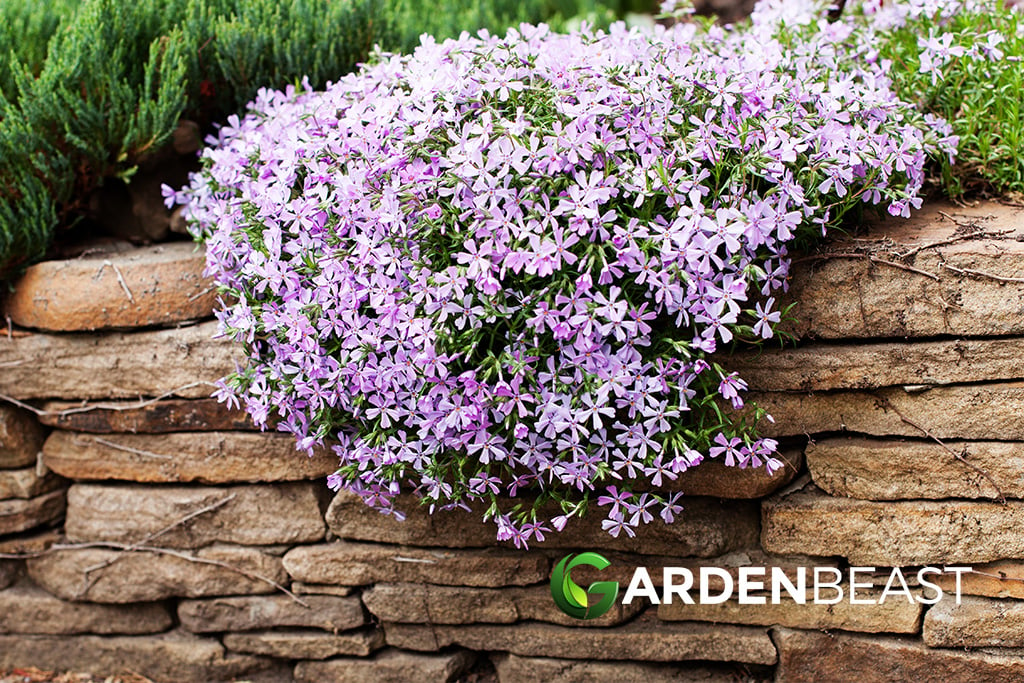
Bee balm
Turn your clay soil garden into a haven for butterflies, bumble bees, and hummingbirds with bee balm. A herbaceous perennial, bee palm is considered an herb, and is part of the mint family. The leaves are quite aromatic and offer medicinal properties. The tubular flowers come to life in mid to late summer, and have a spiky appearance. Bee balm is available in red, purple, and pink, and it does well in nutrient-rich, moist, clay soil.
Bee balm is hardy in USDA growing zones 4 through 9 and does equally well in full sun and partial shade.
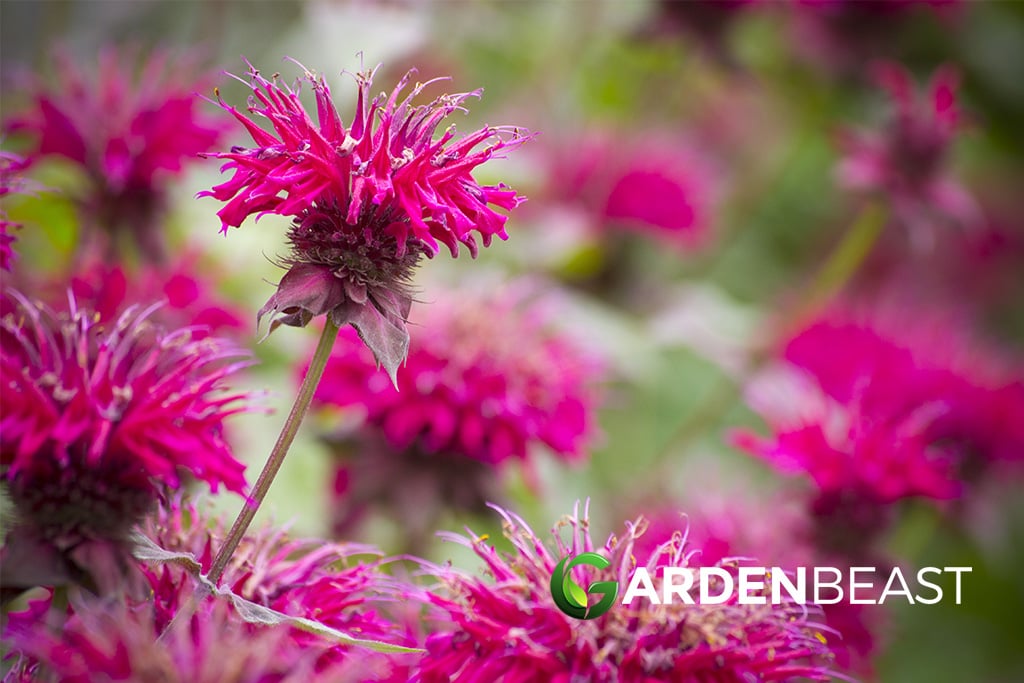
Sea holly
Seal holly is perhaps the most unique flower featured on this list – and one of the most unique looking flowers overall. The thistle-like flower heads are a distinctive feature that will be sure to add an unusual display to your garden. Further adding to the one-of-a-kind nature of the sea holly plant is the wide variety of colors, including blue, green, purple, silver, and white. While it does best in soil that is somewhat dry and sandy, it can tolerate clay soil, so long as it drains well.
Sea holly likes full sunlight the best, and it is hardy in USDA growing zones 3 to 9.

